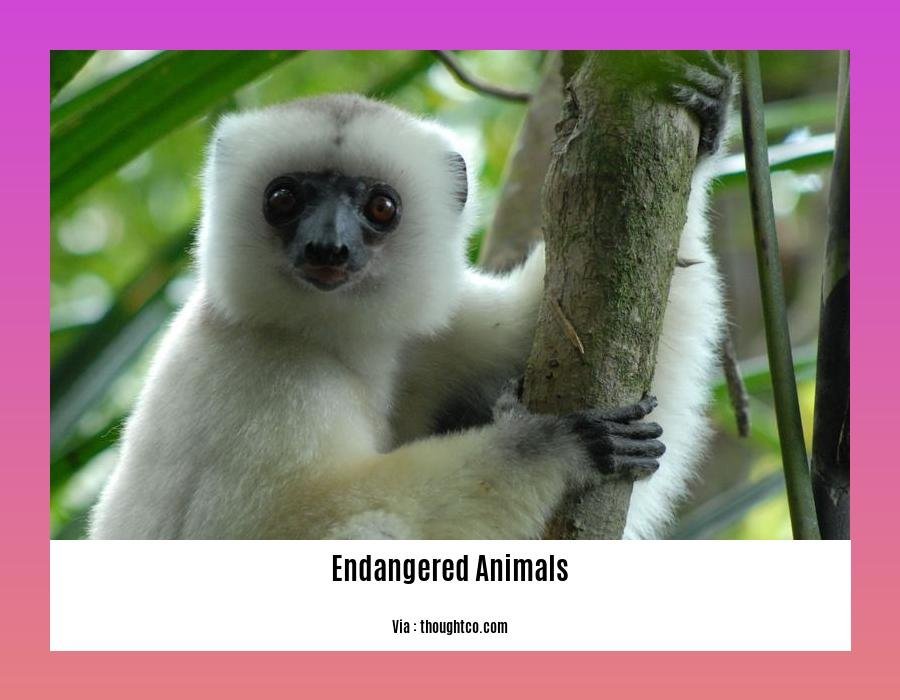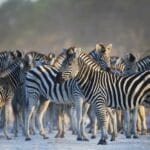The Urgent Crisis: A Closer Look at Few Sentences About Endangered Animals
The world is facing an urgent crisis as numerous animal species teeter on the brink of extinction. In just a few sentences, this article will delve into the harrowing plight of endangered animals, shedding light on the critical issues they face and the importance of conservation efforts. As populations dwindle and habitats disappear, it is crucial that we understand the gravity of this situation and take immediate action to protect these magnificent creatures. Through a closer examination of their struggles, we can gain a deeper appreciation for the urgency of preserving our planet’s biodiversity for future generations.
Key Takeaways:
- Whaling poses a significant threat to whale species, pushing them towards extinction.
- Crocodiles are rare and endangered, with 17 out of 23 species at risk.
- Conservation efforts play a crucial role in protecting endangered animals.
- Over 41,000 species are currently considered to be under the threat of extinction.
- The Javan Rhino is one of the most endangered animals globally.
- Illegal hunting is a major factor contributing to the extinction of animals.
- A species is classified as endangered when its population has declined by at least 80%.
- Human activities such as poaching, habitat destruction, and climate change are significant threats to endangered species.
- Endangered animals face risks from deforestation, pollution, and climate change.
- The giant panda exemplifies the positive impact of conservation efforts, showing an increase in population numbers.
Few Sentences About Endangered Animals

Introduction
As we delve into the issue of endangered animals, it becomes evident that the survival of numerous species hangs precariously in the balance. From the imperiled giants of the ocean to the elusive reptiles lurking in the shadows, the threats they face present a pressing crisis that requires urgent attention. In this article, we will explore the main reasons behind the endangerment of animal species and the pivotal role of conservation efforts in preserving our planet’s biodiversity.
The Threat of Whaling to Whale Species
Few sentences about endangered animals would be complete without addressing the looming danger faced by whales. Whaling, undertaken for centuries, has placed these majestic creatures on the brink of extinction. With the relentless pursuit of their valuable resources and the devastating consequences of commercial hunting, numerous whale species have seen their population numbers plummet. From the magnificent blue whale to the charismatic humpback, our actions have jeopardized their very existence.
The Plight of Crocodile Species
Crocodiles, the enigmatic inhabitants of our rivers and marshes, are also grappling with a precarious future. Among the 23 known crocodile species, a staggering 17 are currently at risk of extinction. Encroachment upon their habitats, poaching for their valuable skin, and the degradation of their ecosystems pose significant threats. Our responsibility lies in recognizing the irreplaceable role they play in maintaining the delicate balance of nature.
Conservation Efforts: A Beacon of Hope
In the face of these mounting challenges, the importance of conservation efforts cannot be understated. Organizations worldwide are tirelessly working to protect and restore endangered animals and their habitats. Through initiatives aimed at raising awareness, combating illegal hunting, preserving critical ecosystems, and promoting sustainable practices, we have the power to turn the tide. By collaborating and fostering a sense of stewardship, we can pave the way for a future where endangered species thrive.
The Alarming Extent of Endangered Species
To fully grasp the urgency of the situation, let’s delve into the staggering statistics. Over 41,000 species worldwide are currently assessed to be under the threat of extinction. This alarming figure casts a somber shadow on our planet’s biodiversity. From vanishing amphibians to imperiled birds, the repercussions of our actions have far-reaching consequences. The Javan Rhino, standing as one of the most endangered animals in the world, serves as a stark reminder of the perilous state we find ourselves in.
Overcoming the Threats: A Collective Responsibility
The main culprits behind the extinction of animals are often human beings themselves. Illegal hunting, habitat destruction, and the insidious impact of climate change serve as formidable adversaries to the survival of vulnerable species. Deforestation, pollution, and changing climatic patterns further exacerbate their plight. It is our duty to ask ourselves: Do we want to be the witnesses of mass extinction or the torchbearers of change?
The Giant Panda’s Resilience
Amidst the gloom, there are stories of hope that illuminate our path forward. The giant panda, an emblem of conservation efforts, showcases the power of collective action. Through unwavering commitment and sustained conservation measures, the giant panda population has shown remarkable signs of recovery. This success story kindles the flame of possibility and reminds us that our efforts can make a tangible difference.
Conclusion
The urgency of confronting the endangered animal crisis and safeguarding our planet’s biodiversity cannot be overstated. By collectively addressing the risks faced by species such as whales and crocodiles, and by wholeheartedly committing ourselves to conservation efforts, we can disrupt the trajectory towards extinction. Let us remember that in the tapestry of life, each animal plays an irreplaceable role. It is our shared responsibility to protect and preserve the remarkable creatures that inhabit our planet, ensuring a legacy of coexistence for future generations.
Canada is known for its amazing landscapes and diverse culture, but have you ever wondered about the famous things in Canada? If you’re curious, click here to explore some of the most renowned attractions and traditions in the country.
Ontario is a province full of surprises, and you won’t believe these five interesting facts about Ontario! Click here to uncover fascinating tidbits about this vibrant region.
Exploration of Specific Endangered Species and Their Unique Characteristics

Endangered species are facing a critical threat of extinction, mainly due to habitat loss and loss of genetic variation. As a seasoned wildlife conservation advocate and environmental writer, I urge you to join me in exploring the fascinating world of specific endangered species and their unique characteristics. Through this exploration, we can gain a deeper understanding of the urgent need for global conservation efforts.
Indonesia: A Biodiversity Hotspot
Indonesia, with its diverse ecosystems and vast rainforests, is home to many iconic and well-known species that are currently endangered. The Sumatran tiger, for example, is fighting for survival in the face of habitat loss and poaching. The rainforests of Indonesia play a vital role in supporting these endangered species, highlighting the interconnectedness of ecosystems and the need for their protection.
Consequences of Human Activities
Human activities, such as habitat destruction, degradation, and illegal hunting, significantly contribute to the endangerment of species. The Convention on International Trade in Endangered Species (CITES) is one of the organizations actively involved in assessing the status of endangered organisms and implementing measures to protect them. It is crucial to recognize our role in the endangerment of these remarkable creatures and take responsibility for their conservation.
Discovering Endangered Species: A Closer Look
Let us embark on a journey of discovery, delving into the lives of some endangered species, understanding their unique characteristics, and the threats they face. Here are a few examples:
Javan Rhino (Rhinoceros sondaicus): With its solitary nature and impressive horn, the Javan Rhino draws attention. Sadly, there are fewer than 80 Javan Rhinos left worldwide, making it one of the rarest large mammals on the planet. Poaching and habitat loss due to human activities are pushing this magnificent creature closer to the brink of extinction.
Amur Leopard (Panthera pardus orientalis): The Amur Leopard, residing in the temperate forests of Russia and China, is one of the most endangered big cats. With fewer than 100 individuals remaining in the wild, this elusive and beautiful leopard faces threats like habitat destruction and illegal poaching for its striking coat.
Orangutans (Pongo spp.): These highly intelligent primates are native to the rainforests of Indonesia and Malaysia. Orangutans are well-known for their incredible ability to use tools and their close evolutionary relationship to humans. However, due to extensive deforestation and illegal pet trade, both the Bornean and Sumatran orangutan species are at risk of extinction.
Key Takeaways:
- Endangered species are threatened by extinction primarily due to habitat loss and loss of genetic variation.
- Human activities, such as habitat destruction and illegal hunting, contribute to the endangerment of species.
- Organizations like the Convention on International Trade in Endangered Species (CITES) are actively working to protect endangered organisms.
- Indonesia’s rainforests are home to many endangered species, emphasizing the need for their conservation.
- The Javan Rhino, Amur Leopard, and Orangutans are just a few examples of iconic endangered species facing unique challenges.
Sources:
- National Geographic Society: source
- Rainforest Action Network: source
Join me in delving into the remarkable lives of these endangered species and the critical issues threatening their existence. By raising awareness and fostering a commitment to conservation, we can ensure the preservation of our planet’s biodiversity for future generations.
Discussion of the Impact of Human Activities on Endangered Animal Populations
Key Takeaways:
- Disturbance characteristics, including the type, frequency, timing, and location of human activity, play a crucial role in understanding the effects on wildlife populations and their behavior.
- Different wildlife species respond differently to human activity, with some being more affected than others.
- The understanding of wildlife behavior, including species life history, age, and sex, is important in studying the impact of human activities on wildlife.
- Human recreation can lead to reduced wildlife occupancy and habitat use in certain species.
- Encroachment of human activities, such as palm oil plantations, poses a significant threat to vulnerable species.
- Conservation efforts should focus on creating spatial and temporal refuges for wildlife and addressing habitat encroachment.
Human activity has a significant impact on wildlife populations and their activity patterns. Understanding the influence of human activities on wildlife is critical for effective conservation efforts.
Disturbance Characteristics and Wildlife Interaction
Disturbance characteristics, such as the type, frequency, timing, and location of human activity, play a significant role in influencing wildlife populations and their behavior. The extent to which human recreation alters wildlife occupancy, habitat use, and activity patterns varies across species. Some species may be more influenced by human activity than others.
Understanding Wildlife Behavior
When studying the effects of human activities on wildlife, it is essential to consider various wildlife characteristics. Factors such as species life history, age, and sex are important in understanding how wildlife behavior is impacted. Variations in wildlife behavior in response to human activity can affect their survival, reproduction, and overall population health.
Conservation Efforts and Consequences
Human-made disturbances affect a quarter of threatened vertebrate species globally. Encroachment of human activities, like the establishment of palm oil plantations, poses a significant threat to vulnerable species. The modification of natural behaviors, adaptation to new environments, and even potential extinction can result from human impact on wildlife. Conservation efforts should prioritize creating spatial and temporal refuges for wildlife and addressing the encroachment of human activities on habitats.
Source 1: Lewis, J.S., et al. (2021)
Source 2: New Scientist. (2019)
Call to Action: Supporting Conservation Efforts for Endangered Animals
Human activity has a profound impact on wildlife populations and their activity patterns. Understanding the consequences of our actions and taking steps to support conservation efforts are crucial in protecting endangered animals and their habitats. Let’s explore how individuals and communities can actively contribute to the cause.
Raising Awareness:
- Engage in conversations about endangered animals and the importance of conservation with family, friends, and colleagues.
- Share educational resources about endangered species through social media, personal blogs, or community newsletters to reach a broader audience.
- Participate in local events or workshops organized by conservation organizations to learn more about endangered animals and their habitats.
Promoting Sustainable Practices:
- Reduce single-use plastics to minimize pollution and its harmful effects on wildlife. Opt for reusable bags, bottles, and utensils.
- Support sustainable products by purchasing items that are ethically sourced and do not harm endangered animals or their habitat.
- Choose seafood from sustainable sources to help protect marine ecosystems and the species that rely on them.
Advocacy for Stronger Conservation Laws:
- Stay informed about current conservation laws and policies in your country or region.
- Write to your local and national representatives urging them to prioritize and support legislation that protects endangered animals and their habitats.
- Join advocacy groups that work towards stronger conservation measures and collaborate with like-minded individuals to effect change.
Supporting Conservation Organizations:
- Donate to reputable conservation organizations such as the International Fund for Animal Welfare (IFAW) and the World Wildlife Fund (WWF) that actively work towards protecting endangered species and their habitats.
- Volunteer your time to assist in conservation projects or initiatives led by local organizations in your community.
- Participate in fundraising events organized by conservation groups to contribute financially to their efforts.
Engaging with Local Communities:
- Recognize local communities as valuable allies in conservation efforts. Collaborate, listen, and involve them in decision-making processes to ensure the sustainable preservation of endangered animals and their habitats.
- Support community-led initiatives that promote sustainable livelihoods and conservation practices, such as eco-tourism or sustainable agriculture.
Key Takeaways:
- Raising awareness about endangered animals and conservation is crucial.
- Promoting sustainable practices helps protect endangered species and their habitats.
- Advocacy for stronger conservation laws can bring about meaningful change.
- Supporting reputable conservation organizations through donations and volunteering makes a difference.
- Engaging with local communities fosters sustainable conservation efforts.
Sources:
1. International Fund for Animal Welfare (IFAW): Endangered species day: A call to action – IFAW
2. World Wildlife Fund (WWF): Wildlife Conservation | Initiatives | WWF
FAQ
Q1: What is the main threat to whale species and how does it put them in danger of extinction?
A1: Whaling is the main threat to whale species, and it puts them in danger of extinction by significantly reducing their populations.
Q2: How many crocodile species are at risk and what is causing their endangerment?
A2: Out of 23 crocodile species, 17 are at risk of endangerment. The main factors causing their endangerment are habitat loss and illegal hunting.
Q3: Why are conservation efforts important for protecting endangered animals?
A3: Conservation efforts are crucial for protecting endangered animals because they help prevent further decline in population numbers and preserve their habitats.
Q4: How many species are assessed to be under the threat of extinction?
A4: Over 41,000 species are assessed to be under the threat of extinction, highlighting the widespread nature of this issue.
Q5: Which animal is considered one of the most endangered in the world?
A5: The Javan Rhino is considered one of the most endangered animals in the world, emphasizing the urgent need for conservation efforts to save this species.
- China II Review: Delicious Food & Speedy Service - April 17, 2025
- Understand Virginia’s Flag: History & Debate - April 17, 2025
- Explore Long Island’s Map: Unique Regions & Insights - April 17, 2025
















